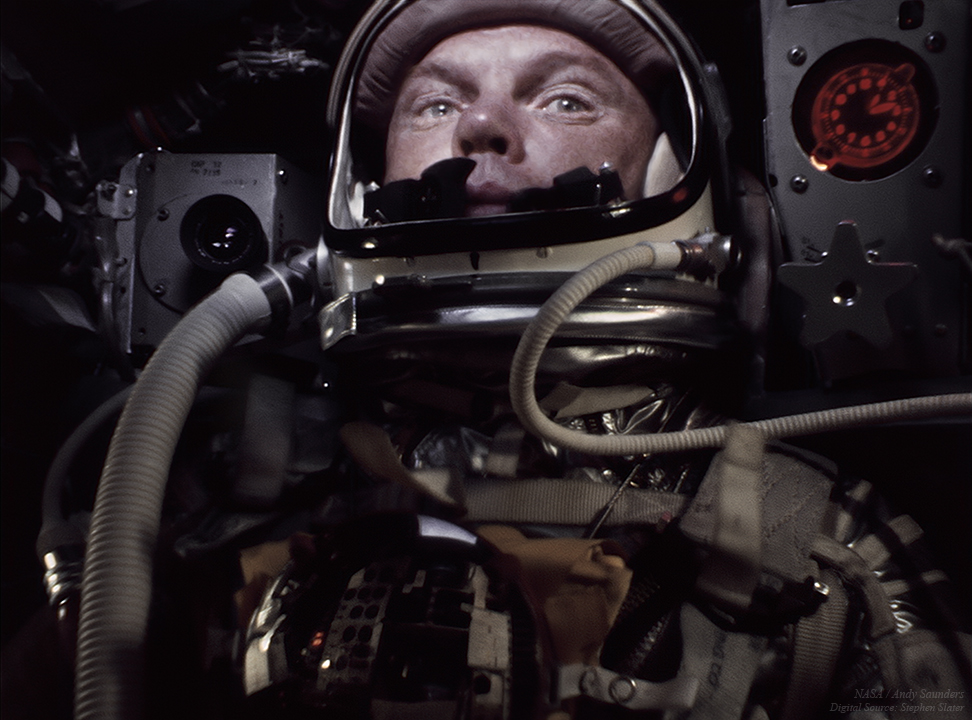This is not a scene from a #scifi movie - this is real life #OTD 1962!
For the 60th anniversary of John Glenn's historic flight, the imagery has been brought into the 21st century. Full images documenting the flight in THREAD:
#ApolloRemastered 1/7
For the 60th anniversary of John Glenn's historic flight, the imagery has been brought into the 21st century. Full images documenting the flight in THREAD:
#ApolloRemastered 1/7

Glenn became the 1st American to orbit Earth on 20th February 1962.
The 60-year-old 16mm flight film (thanks @steveslater1987) has undergone a transformative process, utilising over 1,000 image samples of the film per image, to bring out never-before-seen detail: 2/7
The 60-year-old 16mm flight film (thanks @steveslater1987) has undergone a transformative process, utilising over 1,000 image samples of the film per image, to bring out never-before-seen detail: 2/7

Glenn has been waiting for over two hours in the small, darkened Mercury capsule. He had entered the capsule at around 6am local time. In 6 minutes the gantry would retract and at 09:47 the countdown would finally reach zero. 3/7 

Just five minutes later the Atlas rocket's sustainer engine cut-off. "Zero-g and I feel fine. Capsule is turning around…Oh that view is tremendous!...And I can see the booster during turnaround just a couple of hundred yards behind me!" (The booster is the bright white dot) 4/7 

A close up of Glenn as he assesses the spacecraft's condition via the myriad switches, dials and indicators in the compact Mercury capsule. 5/7 

Unsure if he was about to burn up in Earth's atmosphere, Glenn holds steadfast as the cabin is bathed in an orange glow, "This is Friendship Seven. I think the pack just let go...A real fireball outside!...Great chunks of that retro pack breaking off all the way through!" 6/7 

Glenn splashed down safely in the North Atlantic, completing his near five hour mission on 20th February, 1962; America's first orbital spaceflight. One of the most important moments in spaceflight history, and Glenn became a national hero. 7/7
The two indicator lights illuminated upper right in his mirror (upper left in the capsule) are "JETT TOWER" and "SEP CAPSULE" as seen in this photo via @airandspace. The tower was jettisoned on the way up, c. 2min30sec after launch and capsule separated here at c. 5min 

At this moment the flight surgeon asks, "Have you experienced any nausea at all during the entire flight?" With little information coming from the only two previous, Soviet spaceflights, medics were concerned about how a man may cope in space. Glenn replied, "I feel fine. Over."
• • •
Missing some Tweet in this thread? You can try to
force a refresh






